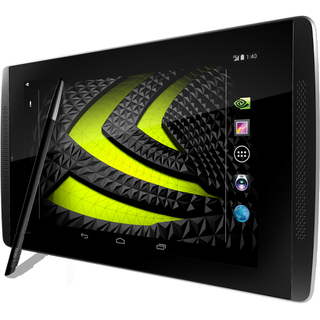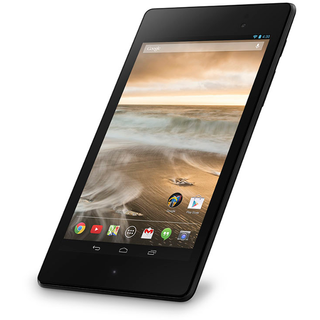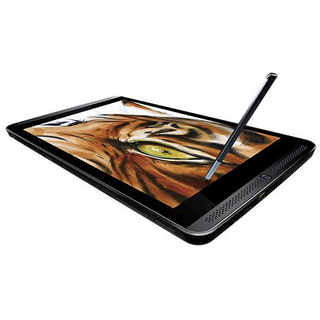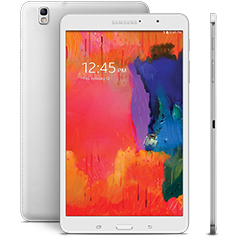Nvidia Shield Tablet And Shield Controller Review
The Shield Tablet, powered by Nvidia’s Tegra K1 SoC, deftly handles browsing and media playback duties. Combining it with the wireless Shield Controller transforms the 8-inch device into an exciting mobile gaming platform.
The Nvidia Shield Tablet And Controller: Defending Against Boredom
Nvidia entered the ultra-mobile market in 2008 when it announced the Tegra SoC. Microsoft’s Zune HD media player became the first design win the following year. Between then and now, Tegra processors continued to evolve, and while they appeared in a growing list of devices, they never stood out as premier performers.
In 2013, Nvidia decided to launch its own consumer-oriented products to promote Tegra and Android gaming. One of these was the Tegra Note 7, a 7-inch tablet with some unique features that faced stiff competition from the Nexus 7. The other product Nvidia created was a bit more unique.
For the Shield, now called Shield Portable, Nvidia wanted to produce something that wasn’t mainstream. A handheld gaming device with an integrated 5-inch 720p screen running Android definitely isn’t going to enjoy the same sales volume as an iPad or Samsung Galaxy phone. However, it found a following within the gaming community, and Nvidia’s presence did lend legitimacy to Android as a gaming platform. While the Shield Portable works well enough for its intended purpose, a specialized design doesn’t allow it to do much else.
Nvidia’s goal for the Shield Tablet is more ambitious: create a device that, first and foremost, is a great tablet, but also happens to be great for playing games. While it’s difficult to design hardware that excels at everything, it would certainly appeal to a wider audience, increasing sales, and, more importantly, emphasizing the advantages of Tegra and attracting game developers to Android.
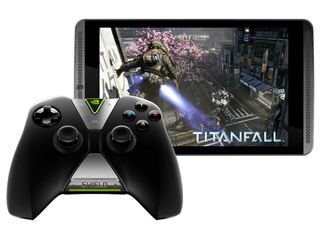
Shield Tablet Tech Specs
For Nvidia to hit such a high mark, the Shield Tablet requires some powerful and power efficient hardware. Fortunately, the Tegra K1 SoC delivers. Like Tegra 4, the K1 uses four ARM Cortex-A15 cores tuned for high performance and one -A15 companion core that’s optimized for low power. Moving to a 28nm HPM process and a newer-revision architecture allows Nvidia to boost maximum CPU clock rate to 2.2GHz.
Previous Tegra SoCs weren’t held back by CPU performance though. Ironically, it was the GeForce ULP that consistently disappointed. For Tegra K1, Nvidia moves to a much more modern GPU derived from the Kepler architecture. While this mobile-tuned variant is understandably scaled down from the desktop version (Tegra K1 contains a single SMX with 192 CUDA cores), it’s still the same architecture and maintains full software compatibility. For more information about the new GPU and Tegra K1, be sure to read our Nvidia Tegra K1 In-Depth article.
The Tegra K1 is paired with 2GB of DDR3L-1866 RAM and either 16GB of on-board NAND for the Wi-Fi-only model or 32GB for the LTE version. Storage is expandable via microSD (up to 128GB).
Stay on the Cutting Edge
Join the experts who read Tom's Hardware for the inside track on enthusiast PC tech news — and have for over 25 years. We'll send breaking news and in-depth reviews of CPUs, GPUs, AI, maker hardware and more straight to your inbox.
Although lacking 802.11ac Wi-Fi support, the Shield Tablet does include 2x2 MIMO 802.11a/b/g/n (2.4 and 5GHz). There’s also Bluetooth 4.0 LE, micro-USB 2.0, and a mini-HDMI 1.4a port for outputting video to an external display.
The LTE version employs Nvidia’s Icera i500 Soft Modem, which includes eight programmable cores running at up to 1.3GHz. These specialized DSP cores are paired with a separate RF transceiver chip and support GSM/GPRS/EDGE, HSPA+ (42Mb/s), and LTE Category 3 (100Mb/s). Since the modem is handled in software, it can be upgraded to support additional standards. Nvidia’s documentation states that the Icera i500 is capable of supporting LTE Category 4 (150Mb/s) with Carrier Aggregation and HSPA+ (84Mb/s), but the Shield Tablet does not support the faster speeds in its initial shipping configuration.
All of this hardware is driven by a 19.75Whr (4938mAh, 4V) non-removable battery. That's roughly 20% less than similar 8-inch tablets like the Xiaomi Mi Pad, Samsung Galaxy Tab Pro 8.4, and iPad Mini with Retina Display. I don’t expect much of a power penalty from the newer revision -A15 cores, since many of ARM’s tweaks were specifically to reduce power draw. The GPU is an unknown, however. It will be interesting to see if Nvidia reduced Kepler’s power envelope to a level acceptable for a tablet. If not, the Shield Tablet’s relatively small battery may be its biggest weakness.
The -A15r3 CPU cores in Tegra K1, now running at comparable clock speeds to Qualcomm’s Snapdragon SoCs, should exceed the performance of all currently shipping CPUs except for Apple’s A7, which still maintains an IPC advantage. The Kepler GPU, with its desktop heritage, should easily outperform the mobile focused architectures of its competitors.
Current page: The Nvidia Shield Tablet And Controller: Defending Against Boredom
Next Page Availability, Options And Accessories-
blubbey Those GPGPU benchmarks are ridiculous in comparison. It looks like a great bit of kit from what I've seen so far. A die shrunk Maxwell should be fantastic. Maybe even a lower clocked version just for power consumption? It'll still perform as well, if not better than the K1 at 750MHz (assuming 2 SMMs) I'd assume.Reply -
Memnarchon "Based on these results, Tegra K1 must be “a neural net processor; a learning computer” sent back through time to destroy all of the other SoCs that could lead a rebellion in the post-apocalyptic future."Reply
Lol this is epic! xD
Anyway, great and unique review. Especially for the so many GPGPU benchmarks.
Nvidia tablet at $299 seems to be a great buy. -
aberkae If maxwell brings double the performance per watt on the same node the next tegra chip on 20 nm node should be a home run for the companyReply -
deftonian Impressive, but I feel it's still missing that "umph" to get me to buy this and carry it around as an added device, next to my phone (Note 3). Maybe I just don't game enough on the android market or steam. Either way, I think it is impressive for a mobile gaming device and all the things it offers. I think they've started a great line and hope it grows into a successful tablet/gaming brand.Reply -
aberkae If maxwell brings double the performance per watt on the same node the next tegra chip on 20 nm node should be a home run for the companyReply -
gio2vanni86 The streaming a game while i'm at my friends house using my PC at home is what has me very interested. Plug into his TV and play amazing games he can only dream of. I'm in.Reply -
vithrell Just wait for Intel's Core M. It wont match the price (CPU alone will cost $300), but in fanless tablet form factor it wont have worthy competitor. Early GPU benchmarks give Core M 55k graphics score in Ice Storm, so more than 1.5x more power than Tegra K1. AND you can run full Windows on it. I wish Nvidia took x86 path with its cpu cores.Reply
Most Popular


